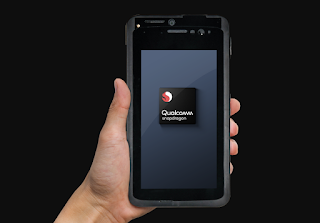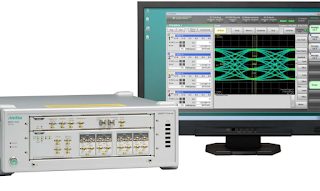Qualcomm and Ericsson successfully completed a 3GPP Rel-15 spec compliant 5G NR call on a smartphone form factor mobile test device.
 The over-the-air (OTA) call was performed using millimeter wave (mmWave) in the 39 GHz band of spectrum using NSA (Non-Standalone) mode. It utilized Ericsson's commercial 5G NR radio AIR 5331 and baseband products and a mobile test device with integrated Qualcomm Snapdragon X50 5G modem and RF subsystem in the Ericsson Lab in Kista, Sweden.
The over-the-air (OTA) call was performed using millimeter wave (mmWave) in the 39 GHz band of spectrum using NSA (Non-Standalone) mode. It utilized Ericsson's commercial 5G NR radio AIR 5331 and baseband products and a mobile test device with integrated Qualcomm Snapdragon X50 5G modem and RF subsystem in the Ericsson Lab in Kista, Sweden.
“Mobilizing mmWave for the smartphone has been seen by many as an impossible challenge, but this demonstration validates that we are on track to bring groundbreaking 5G mmWave experiences to consumers,” says Cristiano Amon, President, Qualcomm Incorporated. “This successful lab call is a testament to our continued innovation and collaboration with Ericsson, and we look forward to further industry-leading milestones with them as we progress to 5G commercialization of networks and mobile devices in early 2019.”
 The over-the-air (OTA) call was performed using millimeter wave (mmWave) in the 39 GHz band of spectrum using NSA (Non-Standalone) mode. It utilized Ericsson's commercial 5G NR radio AIR 5331 and baseband products and a mobile test device with integrated Qualcomm Snapdragon X50 5G modem and RF subsystem in the Ericsson Lab in Kista, Sweden.
The over-the-air (OTA) call was performed using millimeter wave (mmWave) in the 39 GHz band of spectrum using NSA (Non-Standalone) mode. It utilized Ericsson's commercial 5G NR radio AIR 5331 and baseband products and a mobile test device with integrated Qualcomm Snapdragon X50 5G modem and RF subsystem in the Ericsson Lab in Kista, Sweden.“Mobilizing mmWave for the smartphone has been seen by many as an impossible challenge, but this demonstration validates that we are on track to bring groundbreaking 5G mmWave experiences to consumers,” says Cristiano Amon, President, Qualcomm Incorporated. “This successful lab call is a testament to our continued innovation and collaboration with Ericsson, and we look forward to further industry-leading milestones with them as we progress to 5G commercialization of networks and mobile devices in early 2019.”























